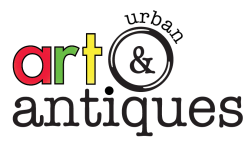
The upcoming Asian Sale (next Monday) has its preview yesterday and today. The sale features both some deaccessioned works from the Metropolitan Museum of Art and the collection of Hon. Hugh Grant, the mayor of the New York City from 1888 – 1892.
Not being able to access to the first-rate Chinese decorative art and antiques, my knowledge in this field was not only limited but also not first-handed. When I asked my friend, a seasoned Chinese art collector for advice, he told me to start from the top. “You need to see and feel what the best ones are before you go out hunting.” Such a task is hard in the US where most of the Asian stores are selling souvenir items while only a few top museums have a sizable collection of Asian art, which nevertheless cannot be touched. In fact, finding best items can be equally challenging in China for a beginner collector even though the availability is greater. Based on my friend, massive forgery of porcelains from two periods may even go under discerning eyes. The first period was right after the fall of Qing Dynasty, where workers from closed royal workshops produced high-quality porcelain from their kiln. Such works should not be attributed as from earlier periods or royal workshops. The second mass forgery was produced most recently when technology enabled newly-made porcelain to look old. Therefore, it was a great opportunity to learn from authentic objects at Doyle when the provenance of these decorative objects proves they could not be possibly made from those two periods. (In fact, some early sale receipts clearly indicate that these objects were obtained before the end of Qing Dynasty.)

The lot 174 features a Chinese vase from Qianlong period. The second longest reigned emperor in Qing Dynasty, Qianlong enjoyed a period of relative peace and prosperity. He was a real connoisseur and an antiquarian collector. Qianlong porcelains were not that rare in China’s market albeit the best still commanded astonishing sums. According to the official records, at its peak, Jing De Zhen official kiln produced more than 100,000 pieces yearly. How many of them survived through the next 250 years? Perhaps no one knows.
Most of the official workshops produced porcelains with the inscription at the bottom. The majority of the inscriptions feature six characters in three lines, written in seal script (a kind of calligraphic style). “Da Qing Qian Long Nian Zhi” means made by Qianlong period in Qing Dynasty. This particular one has such an inscription at the bottom. It is also noted that porcelain export also reached a new height during Qianlong’s reign, 400,000 pieces alone in 1774 to England and 1.1 million to Sweden between 1750—1781. Nevertheless, these export porcelains do not, in general, bear such inscriptions.In fact, the pictures on export porcelains were made to suit western taste, with a lot of them featuring western scenes. The decoration of this one, however, is traditional Chinese and the fact there is an inscription may indicate it was possibly bought directly from China, although some higher-end export porcelain made for special deep-pocketed Western customers may break these rules.
During Qianlong’s rule of China for almost six decades, the style of official inky-blue porcelains changed gradually from a pure blue to a heavy dark blue (with somehow gray). This one seems to be more likely from a later period. The vase not only produced good sound (crisp pitched resonance) from finger tapping but also radiates a tint of light blue (to an almost psychological level) out of the smooth white, a sign of high quality. The bottom rim (which is always rounded for the period) is usually given an extra glaze in brown color.
However, I could not figure out the name of the pattern from existing examples. To me, the round pattern in the middle features bats or phoenix perched on flowers. Bats symbolize luck since both share the same pronunciation. But usually, bats are depicted with peaches, a symbol of longevity. Phoenix, another popular motif, sometimes are depicted to break through flowers. This one is unusually “clean” and “less decorative” compared to the majority that I have seen. An unusual pattern may be a good thing or a bad thing, but again since I am no expert, it is hard to tell whether the pattern is rare.
Below is the short video of this vase.


Very nice article, highly informative…your post formatting is getting better and better…
In all, very enjoyable to read and visually appealing…
Take Care
Martin
LikeLike